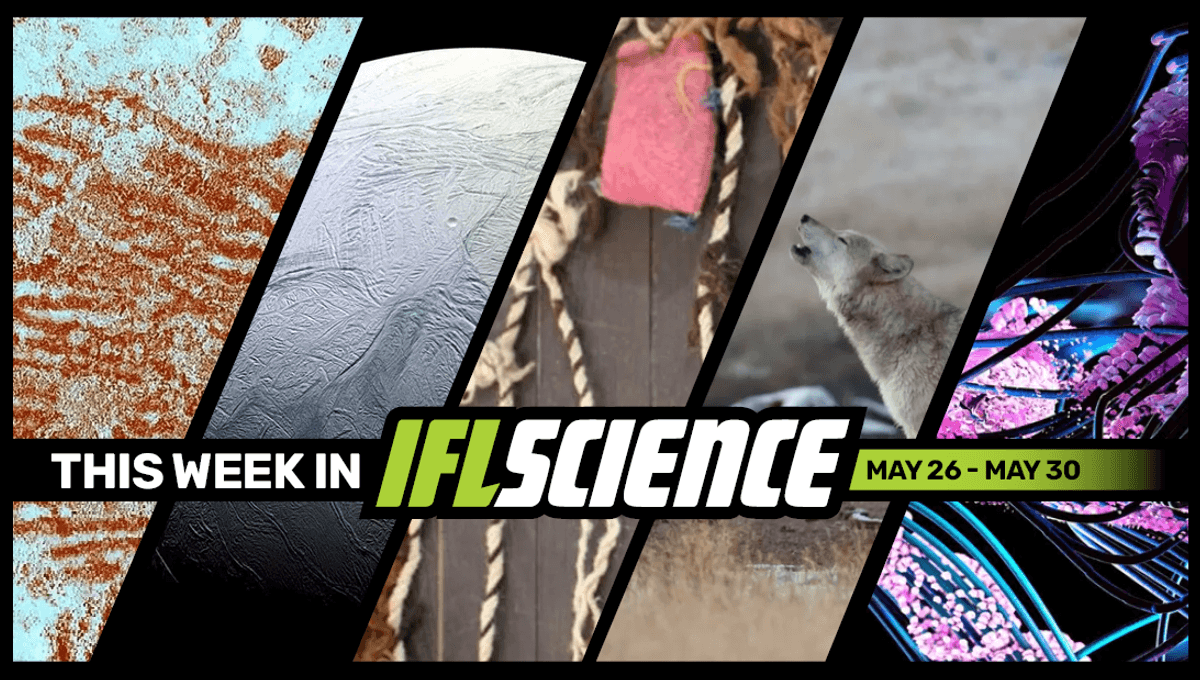
This week, scientists have proposed infecting another world with life to see what happens, we’re starting to understand the ancient Incas’ mysterious string “writing” system, and a patient who received an infected injection nearly 50 years ago has only now suffered the effects of a severe prion disease. Finally, we ask, if the human brain is like a computer, does it have a finite memory capacity?
Create an IFLScience account to get all the biggest science news delivered straight to your inbox every Wednesday and Saturday.
A Neanderthal Left A Fingerprint On This Rock, Possibly While Painting A Face On It
The oldest fingerprint ever discovered is also the most complete Neanderthal fingerprint and may have been left behind by a prehistoric artist while painting a face on a pebble using red ocher. Found at the San Lázaro rock shelter in central Spain, the rouge dactylogram provides new evidence for the cognitive abilities of Neanderthals, implying that they shared our tendency to see faces in inanimate objects – a phenomenon known as pareidolia. Read the full story here
Scientists Propose Deliberately Infecting Another World With Life To See What Happens
The icy moons of the Solar System, like Europa around Jupiter and Enceladus around Saturn, are the most likely candidates for life beyond Earth. They have deep oceans, and in the case of Enceladus, we know there are crucial elements for life and chemical activity in that ocean. A new paper asks us to consider a bold proposal: injecting Enceladus with microbes to see how life might spread. Read the full story here
Ancient Inca Used A Mysterious String “Writing” System – And We’re Starting To Understand What It Said
Up until the time of the Spanish conquest in the 16th century, Inca communities in the Andean highlands used a peculiar form of writing to record key events and keep track of their economic affairs. Known as khipus, these ancient documents made of string, knots, and tassels are now largely indecipherable, although the work of one leading researcher has revealed how the strange memos contained details about climate change. Read the full story here
How Bioacoustics Could Decode Howls And Give Us “A Peek Into The Language Of Wolves”
In the 1920s, gray wolves were exterminated in the Yellowstone area because people viewed them as a threat to people and livestock. It was a grave mistake, and one we tried to correct back in 1995 when wolves were reintroduced to the area. Now, we face the tricky issue of monitoring the population’s health without getting in the way. Enter bioacoustics, AI, and an attempt to decode wolf communication. If effective, it could transform conservation forever. Read the full story here
Nearly 50 Years After An Infected Injection, Prions Rapidly Take Over A Woman’s Brain
After silently lurking for almost 50 years, a prion disease erupted in the brain of a woman in the US, triggering a rapid and severe neurological decline before taking her life. The source of the condition, it appears, was a since-discontinued hormone treatment she received decades earlier that unknowingly introduced a rogue protein into her body. Read the full story here
TWIS is published weekly on our Linkedin page, join us there for even more content.
Feature of the week:
Does The Human Brain Have A Finite Memory Capacity?
It’s tempting to think of the brain like a computer. In fact, there are some theories about how our brains store memories that look more like a computer than modern computers do. You can purchase a laptop based on the size of its hard drive – but can we really treat our brains the same way? Does the human brain have a set, finite storage capacity, or is this where the metaphor starts to break down? Read the full story here
More content:
Have you seen our e-magazine, CURIOUS? Issue 34 May 2025, is available now. This month we asked, “Why Do We Love Nostalgia?” – check it out for exclusive interviews, book excerpts, long reads, and more.
PLUS, the We Have Questions podcast – an audio version of our coveted CURIOUS e-magazine column – continues. In episode 8, we ask, “Why Don’t Animals Have To Brush Their Teeth?”
The Big Questions podcast returns next month for season 5. Catch up with season 4 here.
Source Link: World's Oldest Fingerprint, Bioacoustics Could Give Us “A Peek Into The Language Of Wolves”, And Much More This Week